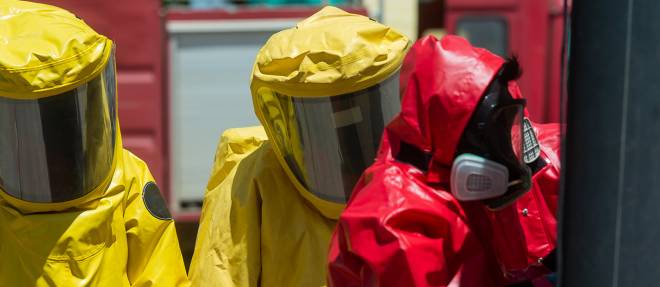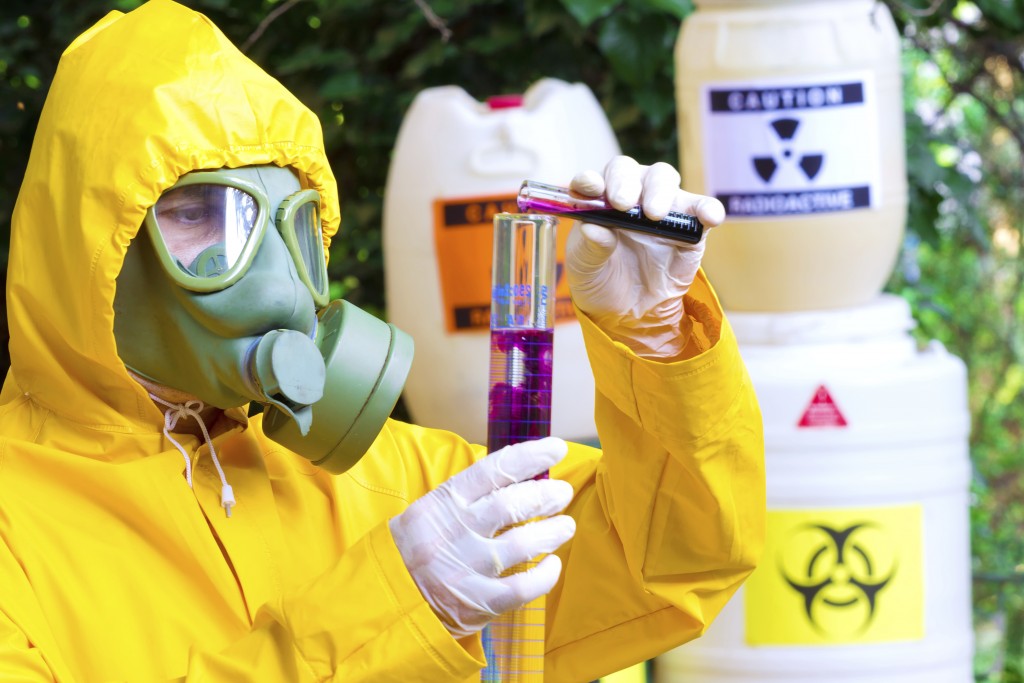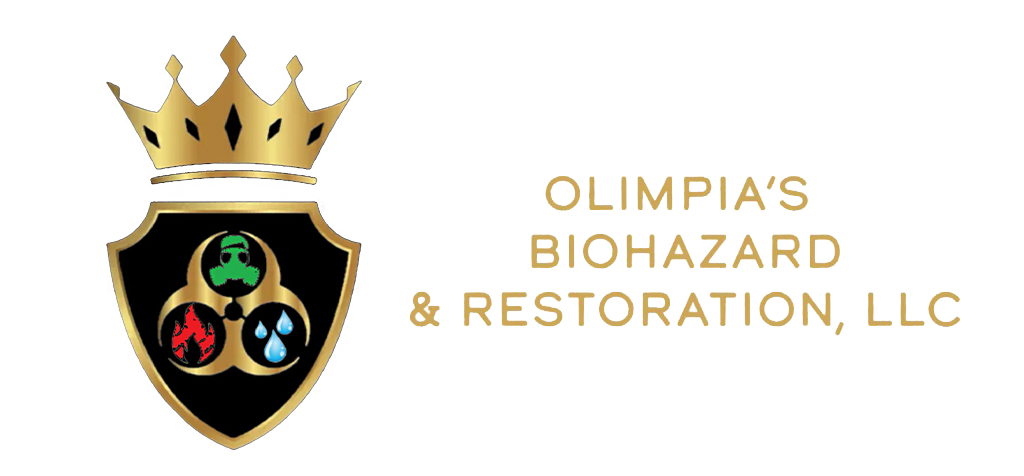Methamphetamine production leaves a toxic legacy, posing significant health risks to those tasked with its cleanup. In this blog post, we delve into the critical importance of Personal Protective Equipment (PPE) in the context of meth lab remediation. As clandestine labs often contain hazardous chemicals, residues, and contaminated surfaces, proper PPE becomes the frontline defense for workers. In this comprehensive guide, Olympia’s Biohazards & Restoration LLC will help you explore the types of PPE essential for meth lab cleanup, their specific functions, and the overarching role they play in safeguarding the well-being of those on the front lines of this challenging task.
Understanding the Meth Lab Cleanup Challenge:
Meth labs, often clandestine and hidden from plain sight, are notorious breeding grounds for a sinister cocktail of hazardous substances. Within the walls of these illicit operations, corrosive acids, volatile solvents, and a myriad of toxic byproducts create a hazardous environment that extends far beyond the production phase. Without meticulous cleanup measures, these insidious contaminants persist, casting a long shadow of health risks for both present occupants and unsuspecting future inhabitants.
The aftermath of methamphetamine production leaves a toxic legacy that reaches beyond the obvious surface-level concerns. Not only do these hazardous substances compromise the immediate safety of those in proximity, but they also introduce a looming threat to the structural integrity of the affected space. Over time, the residual chemicals can seep into porous materials, compromising the air quality and leaving an indelible mark on the building itself.
The Imperative of Personal Protective Equipment (PPE):
In the face of such formidable challenges, Personal Protective Equipment (PPE) emerges as a non-negotiable necessity. It transcends the realm of mere recommendation, evolving into a critical shield against the potential exposure to harmful substances inherent in meth lab environments. The gravity of the situation demands a proactive approach, as the repercussions of inadequate protection can manifest in various ways – from immediate respiratory issues and skin irritation to the insidious development of long-term health complications.
Respiratory protection stands at the forefront of these considerations, given the prevalence of airborne contaminants generated during the meth production process. The inhalation of these toxic particles can lead to severe respiratory distress, emphasizing the vital role of high-grade masks or respirators in safeguarding the respiratory well-being of cleanup crews.
Skin, being the body’s largest organ, is equally vulnerable to the threats posed by lingering contaminants. Chemical-resistant gloves, a fundamental component of PPE, act as an essential barrier, preventing direct contact with substances that could cause irritation or absorption through the skin. The proper selection of gloves, considering the specific chemicals involved, is paramount to ensuring comprehensive protection.


Furthermore, the importance of full-body protection cannot be overstated. Disposable coveralls made from materials like Tyvek provide a physical shield, minimizing the risk of chemical absorption through clothing. This comprehensive coverage is particularly crucial during tasks that involve direct contact with contaminated surfaces or the handling of hazardous materials.
Eye protection, often overlooked, completes the ensemble of PPE essentials. Safety goggles or face shields serve as a critical defense against splashes, fumes, and airborne particles that can pose significant risks to ocular health. The eyes, sensitive and exposed, require dedicated protection to prevent both immediate injuries and long-term damage.
Beyond Compliance: A Moral Imperative:
While regulations mandate the use of PPE in hazardous environments, its significance transcends mere compliance. It embodies a moral imperative – a commitment to prioritizing the safety and well-being of those entrusted with the formidable task of meth lab cleanup. Recognizing the potential long-term health implications, both physical and psychological, underscores the ethical responsibility to provide robust protection for individuals who courageously navigate this perilous terrain.
Essential Personal Protective Equipment for Meth Lab Cleanup:
Respirators and Masks:
Respiratory protection is paramount in meth lab cleanup due to the presence of airborne contaminants. In these hazardous environments, the inhalation of toxic substances poses a significant threat to the health of cleanup crews. To address this, the use of N95 respirators or higher-grade masks becomes imperative. These masks are specifically designed to filter out particulate matter, ensuring that workers are shielded from inhaling harmful substances during the cleanup process. The effectiveness of these respirators is instrumental in preventing immediate respiratory issues and minimizing the risk of long-term health complications associated with exposure to toxic airborne particles. As cleanup teams navigate the challenging task of remediation, the proper use of respiratory protection stands as a critical measure in ensuring the well-being of individuals on the front lines of meth lab cleanup.
Chemical-Resistant Gloves:
Given the diverse range of chemicals involved in meth production, the use of chemical-resistant gloves becomes imperative for the safety of cleanup crews. The intricate processes associated with methamphetamine production result in the presence of corrosive acids, volatile solvents, and various toxic byproducts. To safeguard against direct skin contact with these hazardous substances, the adoption of Nitrile or neoprene gloves is crucial. These gloves offer a reliable and robust barrier, ensuring that workers are shielded from the potential risks of exposure during the cleanup efforts. The careful selection of chemical-resistant gloves, tailored to the specific nature of the substances involved, is a fundamental aspect of the comprehensive safety measures undertaken in meth lab cleanup. As cleanup teams engage in the meticulous task of remediation, the use of these gloves stands as a critical protective measure to prevent immediate skin irritation and mitigate the long-term health complications associated with chemical exposure.


Protective Clothing:
Full-body protection is deemed necessary in meth lab cleanup to prevent direct skin exposure to hazardous substances. Recognizing the potential risks associated with skin contact, particularly when dealing with a diverse range of chemicals involved in meth production, the use of disposable coveralls becomes a vital safeguard. These coveralls, often crafted from materials such as Tyvek, provide a comprehensive protective barrier, effectively minimizing the risk of chemical absorption through clothing. The adoption of such full-body protection is particularly crucial during tasks that involve direct contact with contaminated surfaces or the handling of hazardous materials. By enveloping the entire body, these coveralls contribute significantly to the overall safety of cleanup crews, serving as a frontline defense against the potential health hazards posed by the lingering remnants of methamphetamine production. As cleanup teams navigate the challenges of remediation, the implementation of full-body protection stands as a fundamental measure in ensuring the well-being and safety of individuals undertaking this demanding task.
Eye Protection:
Safety goggles or face shields play a critical role in safeguarding the eyes during meth lab cleanup, providing a necessary shield against splashes, fumes, and airborne particles. Eye protection is paramount, considering the various hazards inherent in the handling of chemicals and the decontamination processes involved. These protective measures are designed to prevent immediate injuries, such as chemical splashes, as well as to guard against the potential long-term damage caused by exposure to harmful substances. Whether dealing with corrosive acids or volatile solvents, the eyes, being particularly vulnerable, require dedicated protection to ensure the well-being of cleanup crews. The implementation of safety goggles or face shields, therefore, stands as an essential component in the overall safety protocol during meth lab remediation, addressing the unique challenges posed by the diverse array of contaminants present in these environments.
The Role of PPE in Minimizing Health Risks:
PPE acts as a crucial line of defense, significantly reducing the health risks associated with meth lab cleanup. By creating a physical barrier between the worker and harmful substances, PPE serves as a proactive measure to prevent immediate and long-term health issues. The proper use of PPE is not just a regulatory requirement but a moral obligation to prioritize the safety and well-being of those involved in meth lab remediation.
Challenges and Considerationas:
Meth lab cleanup is a complex and demanding process, fraught with challenges that require careful consideration to ensure the safety and effectiveness of remediation efforts. Taking a look at the step-by-step guide on effective meth lab cleanup in Portland will help you greatly. Addressing these challenges is crucial for the well-being of cleanup crews and the success of the cleanup operation.
Unpredictable Nature of Contaminants:
The diverse range of chemicals involved in meth production contributes to the unpredictable nature of contaminants left behind. Learning about how to safely handling hazardous material in meth lab cleanup will provide you with a lot of insight in this regard. Cleanup crews face the challenge of identifying and mitigating risks associated with corrosive acids, volatile solvents, and other toxic byproducts. Understanding the specific characteristics of these substances is essential for implementing targeted cleanup strategies.
Structural Contamination:
Methamphetamine residues can penetrate porous materials, leading to structural contamination. This poses a long-term risk to the integrity of buildings and surfaces. Cleanup efforts must address not only surface-level contamination but also the potential infiltration of hazardous substances into the structure itself. Comprehensive strategies are needed to ensure thorough decontamination.
Training and Education:
The success of meth lab cleanup depends significantly on the knowledge and expertise of cleanup crews. Providing adequate training on the identification of hazardous substances, proper use of Personal Protective Equipment (PPE), and adherence to safety protocols is crucial. Continuous education is essential to keep cleanup teams updated on the latest advancements in cleanup techniques and safety measures.
Proper Disposal of Hazardous Waste:
Disposing of hazardous waste from meth lab cleanup poses a regulatory challenge, necessitating strict adherence to guidelines for handling, packaging, and disposal. Non-compliance not only risks environmental harm but also invites legal consequences. Emphasizing responsible disposal practices is crucial for safeguarding both public health and environmental integrity.
Health Monitoring and Long-Term Effects:
Even with the use of PPE, cleanup crews remain susceptible to potential health risks. Therefore, continuous health monitoring is imperative for individuals engaged in cleanup efforts. Health risks involved inadequate meth lab decontamination are extreme. Given that the long-term effects of exposure to methamphetamine production byproducts may not manifest immediately, prioritizing ongoing health assessments is crucial. Offering robust support systems for cleanup personnel further underscores the commitment to their well-being.
Environmental Impact:
Meth lab cleanup goes beyond human health concerns to encompass a significant environmental impact. The release of toxic chemicals during the production process can leave lasting effects on the surrounding ecosystem. Striking a delicate balance, cleanup efforts must not only restore affected spaces but also prioritize environmental conservation, minimizing adverse effects on flora and fauna. This dual commitment ensures a comprehensive approach to the remediation process.
Cost and Resource Allocation:
Meth lab cleanup is inherently resource-intensive, demanding specialized equipment, materials, and skilled personnel for effective remediation. The perpetual challenge lies in striking a balance between the imperative for comprehensive cleanup and the constraints of available resources. Meth lab cleaning professionals must take into considerations all the factors descibed above. Successful execution hinges on efficient resource allocation and astute budget management, both critical elements ensuring the success and sustainability of meth lab remediation projects.
Conclusion:
In the hazardous realm of meth lab cleanup, Personal Protective Equipment emerges as the unsung hero, providing a shield against the invisible dangers lurking within. The meticulous selection and use of PPE are pivotal in ensuring the safety and well-being of those who courageously tackle the aftermath of methamphetamine production. There are numerous companies that provide effective meth lab cleanup services for the people of Portland. As we navigate the complexities of this challenging task, let us not underestimate the power of proper protection – for in safeguarding those who cleanse, we protect the health of our communities and the resilience of our environment.
FAQ’s
What PPE is needed for meth?
Essential PPE for meth lab cleanup includes N95 respirators, chemical-resistant gloves (Nitrile or neoprene), and disposable coveralls (Tyvek). Eye protection with safety goggles or face shields is also vital for comprehensive safety during the cleanup process.
Is muriatic acid used for drugs?
Muriatic acid, also known as hydrochloric acid, is not typically used in the production of drugs. It is a strong corrosive acid primarily employed in industrial processes, cleaning, and certain laboratory applications. However, its accessibility raises concerns about potential misuse, emphasizing the importance of monitoring and regulating its distribution.
What PPE is needed for toxic substances?
For handling toxic substances, essential Personal Protective Equipment (PPE) includes chemical-resistant gloves and appropriate eye protection such as safety goggles or face shields. Additionally, respiratory protection like N95 respirators is crucial to prevent inhalation of harmful fumes or particles.
What is the safety of muriatic acid?
Muriatic acid, or hydrochloric acid, is corrosive and poses significant safety risks. Users must wear appropriate Personal Protective Equipment (PPE), including gloves and eye protection, and follow strict safety protocols to avoid skin and eye contact, inhalation, and environmental hazards.
What are 4 items of PPE?
N95 respirators and chemical-resistant gloves are vital for respiratory and hand protection. Safety goggles or face shields, along with disposable coveralls, provide essential eye protection and full-body coverage in hazardous situations.
